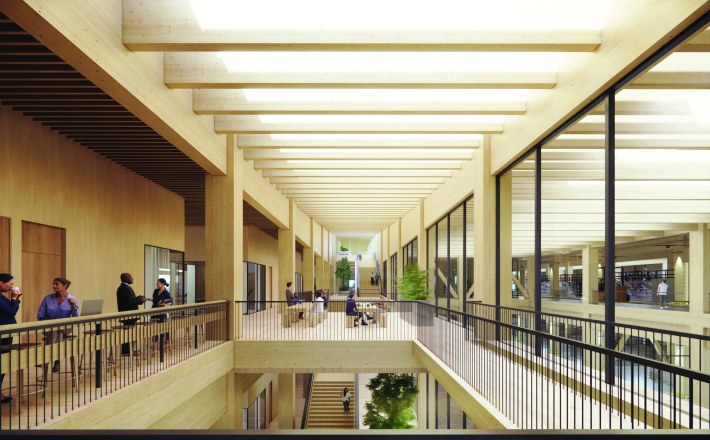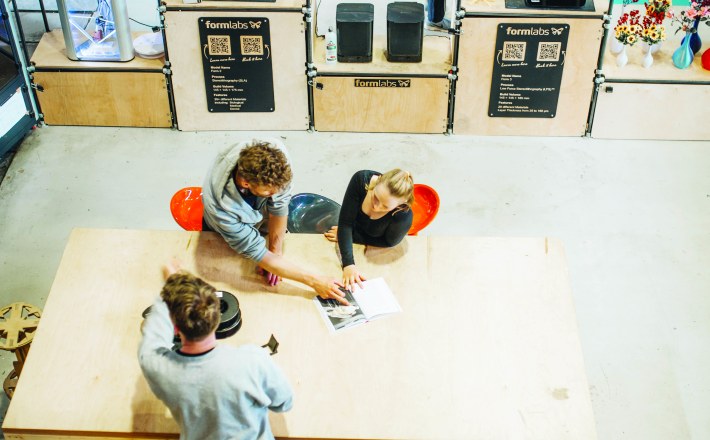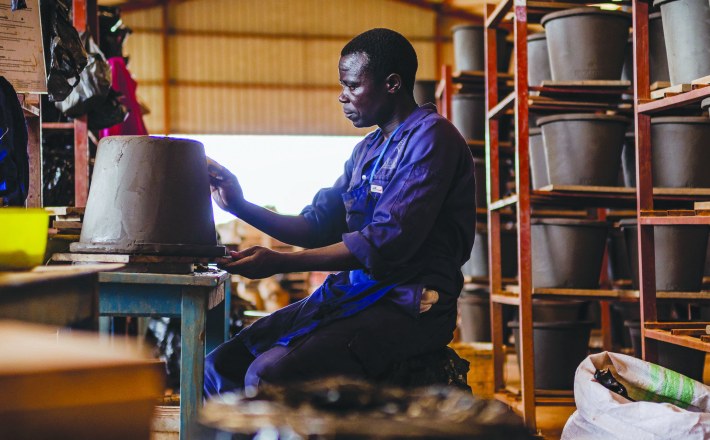Yearning for Comfort
Rooms are becoming ever more comfortable, both at home and in hotels. Thomas Tritsch could write the book on this topic. Together with architect Sabine Mühlbauer, the artist founded Morgen Interiors in 1998.
The creative studio acts as a liaison between the disciplines of architecture, design, art, music, events, and handicrafts. Creating spaces you’re happy to spend time in is one of Morgen’s core competencies — one which the team demonstrates time and again in both private and public projects across Europe. For example, at the freshly renovated 25hours Hotel The Trip in Frankfurt, the concept for which Morgen Interiors worked in cooperation with Frankfurt-based artist Michael Dreher. In a talk with COMPANION, Thomas discussed the requirements of cosy design, the importance of well-being in hotels, and why the uncomfortability of travelling will continue far into the future.
COMPANION: The Danes have a word for keeping cosy at home — the ‘hygge’ trend is currently making its way across the world. Where did this recently awakened need for a comfortable home come from?
Thomas Tritsch: I think the phenomenon is popular at the moment because it’s being pushed by the industry. The need for comfort has always been there, and behind it is the human yearning for a feeling of well-being. Different eras had different ideas about what comfort looks like. ‘Hygge’ is simply the contemporary term for it.
How are interior designers and homeware providers reacting to the current movement?
I would think no one is untouched by the topic in some way. There’s a big market for interiors, and it’s currently flooded with products related to ‘hygge’, from cushions and blankets to comfortable sofas, right up to relaxing tea. Some of the products are good, but others are a little off the mark. By and large, it’s manifested in a happy, eclectic mix of things from all over the world, far removed from any design paradigms.

Hotels also want to be able to function as a kind of replacement living room. How is it possible to create a sense of comfort in these spaces?
The same way you would at home! Comfort is first created in the mind by incorporating memories and desires. I don’t think it should be any different for a hotel, other than that the materials used should be more hardwearing than in private spaces. Colour is very important too, of course. One of our goals is to leave no white space unpainted by the end of a project. In hotels, the lighting should be both warm and flexible. In general, the materials used should have a history and an authentic message. Think ceramic tiles, Berber carpets, reclaimed wood, or concrete.
You helped to design the newly renovated 25hours Hotel The Trip in Frankfurt, which tells the story of a trip around the world. What role does the subject of ‘well-being’ play here?
In the planning phase, well-being didn’t play an important role. In any case, like with all of our projects at Morgen, we wanted to create intuitive spaces that people are happy to spend time in. At The Trip, a lot is conveyed via storytelling — the idea of comfort is conveyed using stories from all over the world. One lovely example is the Finnish sauna, which for some goes hand in hand with the idea of well-being. Though, some guests might feel more at home in the hidden Speakeasy Bar, sipping on a fine Japanese sake.
Furniture from past eras usually seems rather uncomfortable from a contemporary perspective. When was the idea of comfort actually invented?
Good question. I guess when the first person hunted an animal and took the cosy pelt back to their cave. [laughs] Oh yeah, and then came the fire! Comfy furniture probably came along a lot later.
Comfort is first created in the mind by incorporating memories and desires.
Thomas Tritsch
On the other hand, there are currently a lot of young design labels whose lighter and more delicate designs may look pretty but don’t seem particularly cosy.
The great thing is that anything goes nowadays — and at the end of the day, it’s the mix itself that’s interesting. A balanced combination of different styles ultimately makes for a nice interior. Good furniture, regardless of what design concept it’s based on, will always find a buyer. In contrast, artworks disguised as furniture can be beautiful eye-catchers, which is the only justification they need. Personally, it annoys me when I order, say, a chair which doesn’t turn out to be comfortable.
Do politically uncertain times also call for uncomfortable furniture, so that the comfort of the people does not induce inactivity?
An interesting thought — I think there is certainly something there. When it comes to comfortable furniture, I first think of a welcome counterpoint to our hectic and stressful lives. That’s how a balance can be struck. However, attack and retreat as a whole have nothing to do with inactivity.
Take the bench — be it at a bus stop, a train station, or a waiting hall in an airport. Why is waiting so uncomfortable wherever you go?
In Germany, at least, that is due to our German Bauhaus culture, a design concept that is now known to all and primarily cheap to produce. Elsewhere, in South America, for example, the history of design is rather different. There, waiting-room furniture is much more organic and looks a lot more comfy than ours.

Why do airlines still offer no comfortable options for sleeping in economy class too — even though, if you believe the innovative inventors, it could be done easily and even at no great expense?
It’s still all about the profit. If economy class were more comfortable, fewer people would book business-class seats. There are precise calculations behind every decision, and at the end of the day, the main driver is maximising profits.
A very general question: which requirements must be fulfilled in design, especially when it comes to rooms, in order to make people happy?
Beauty makes people happy. So, too, do beautiful spaces. We need an aesthetically pleasing environment to unwind and feel free. Rooms like that give us a sense of security.
Is there a place in which you feel completely comfortable?
If things are going well and I’m feeling happy, I feel comfortable absolutely everywhere! Even the best design can’t help if you’re in a bad mood.




